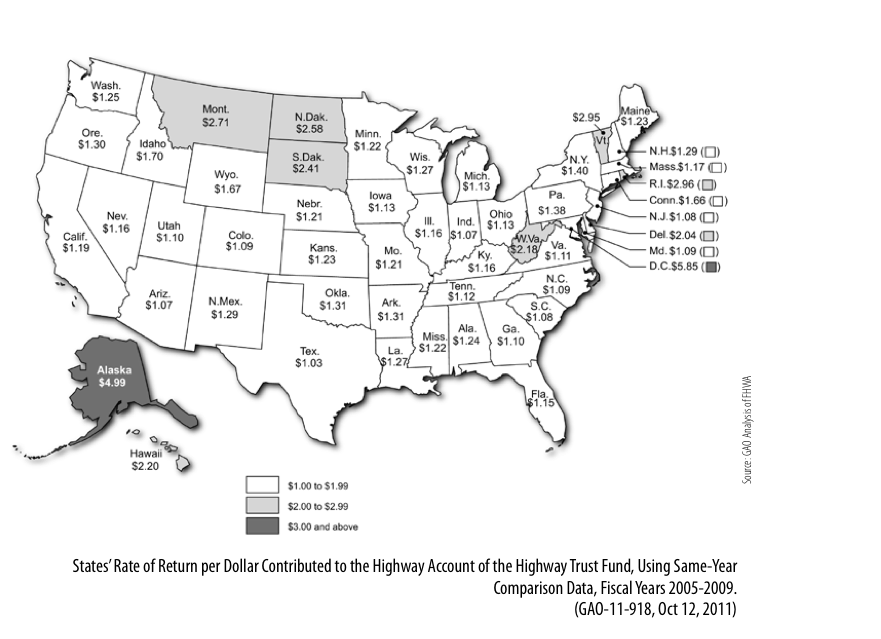MILLER CENTER
Executive Summary
The 2011 David R. Goode National Transportation Policy Conference caught the U.S. transportation policy debate at a crossroads in its decades–long history. Lack of progress on a transformational policy agenda combined with a sense of urgency about the need to maintain and improve the nation’s transportation infrastructure had both frustrated and energized conference participants. They agreed that another plan or more supportive rhetoric was not necessary. What is needed is tangible action. This report reflects that focus. It proposes a set of practical, actionable recommendations grounded in the themes that consistently emerged over two days of conference discussions.
Much about the current transportation debate is, of course, familiar: funding challenges and policy disagreements have always been part of the reauthorization cycle for the federal government’s transportation programs. Today these challenges are: (1) overlaid by a chronic shortfall in revenue flows to the Highway Trust Fund; (2) a focus on fiscal austerity that is driving much of the political discourse; and (3) a lack of public trust in the federal transportation program. In this environment, the tradition of broad bipartisan support for investments in surface transportation has largely broken down.
Research and experience, however, suggest that this erosion of support for transportation investments does not necessarily extend to the American public. Most citizens voice support for public spending on transportation when they perceive that this spending will result in positive outcomes at the local level. In general, the public also remains receptive to the message that smart transportation investments can make a positive long-term contribution to economic growth, U.S. competitiveness, and job creation. These findings form the basis for many of the recommendations in this report.
Conference participants agreed that 2012 is important to bring attention to the issue, harness a confluence of forces, and open the door to fundamental change in U.S. transportation policy and programs. The first part of the year has already seen early bursts of legislative activity, though it remains unclear whether this activity will lead to the passage of a long-term reauthorization. At the same time, a national conversation about how to create the conditions for economic recovery in the short term and sustained economic prosperity in the long term is taking place in the context of the 2012 election. This conversation presents an opportunity to raise public awareness of the importance of transportation investments and to inject transportation issues into a larger debate about the nation’s challenges and priorities in the decades ahead. Leveraging that opportunity will require a thoughtful, well-coordinated, and high-profile communications strategy.
The communications strategy we recommend has four key features or elements:
1. A positive, forward-looking tone that frames the transportation debate around issues of economic growth, jobs, and U.S. competitiveness, combined with quality of life. (See page 20)
2. A well-defined but flexible campaign plan that is keyed to the rhythms of an election year and to important events in the transportation calendar. (See page 21)
3. A focus on building broader engagement through effective, targeted use of traditional media and social media. (See page 24)
4. A concerted effort to link local transportation investment opportunities and benefits to national-level policy decisions.
Conference participants are under no illusions about the difficulty of being heard in an election year, let alone the difficulty of setting a substantive reform agenda in motion at a time of extreme political polarization and intense resistance to public spending of all kinds. Nevertheless, we are confident that a concerted advocacy effort, built around the central elements we have recommended, can achieve the objective we have set for ourselves: to raise a sense of awareness and urgency about the importance of transportation investment and to create the conditions for real and lasting change in our nation’s approach to transportation.
Download the full report (PDF) here: Are We There Yet? Selling America on Transportation
About the Miller Center
www.millercenter.org
“The Miller Center is a nonpartisan institute that seeks to expand understanding of the presidency, policy, and political history, providing critical insights for the nation’s governance challenges. Based at the University of Virginia, with offices in Charlottesville and in Washington, D.C., the Miller Center is committed to work grounded in rigorous scholarship and advanced through civil discourse. Gerald L. Baliles, 65th governor of Virginia and former chairman of the board of PBS, has served as director and CEO of the Miller Center since April 2006.”
Tags: Are We There Yet? Selling America on Transportation, David R. Goode National Transportation Policy Conference, Miller Center, Norman Mineta, Samuel Skinner







 RSS Feed
RSS Feed